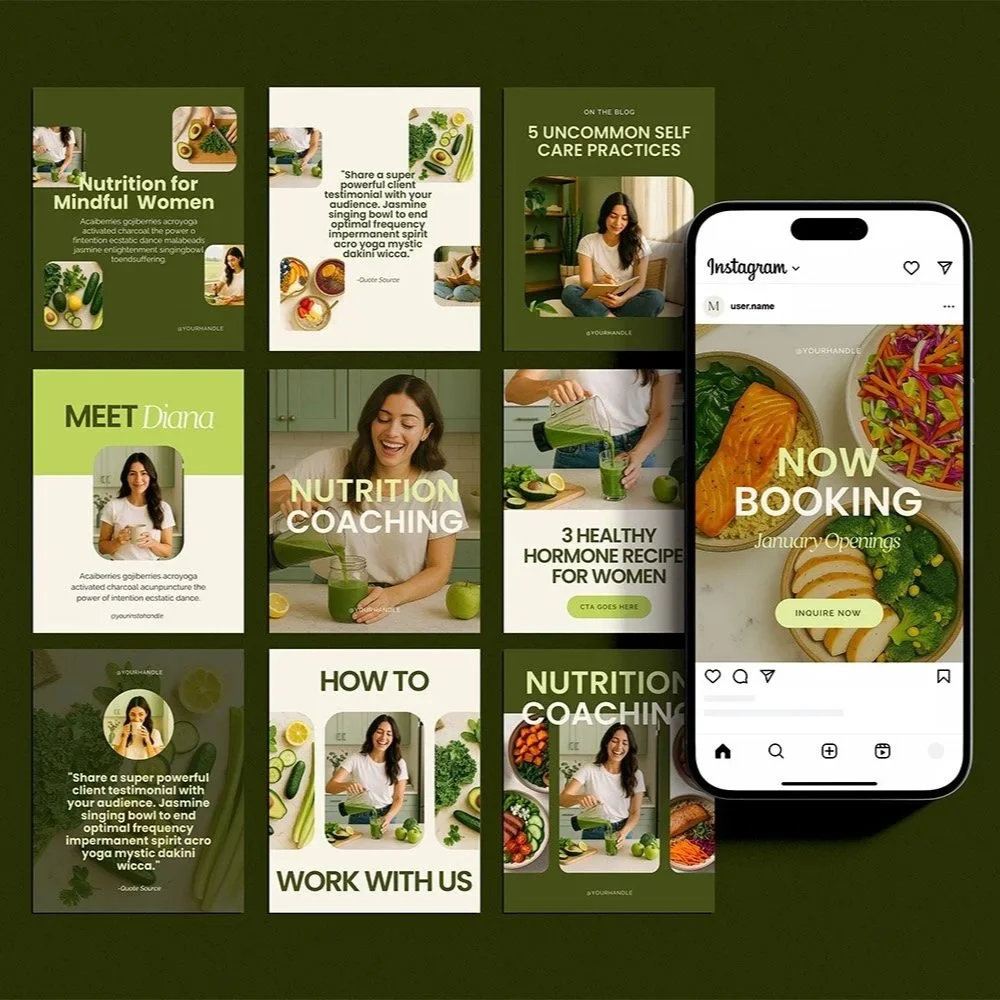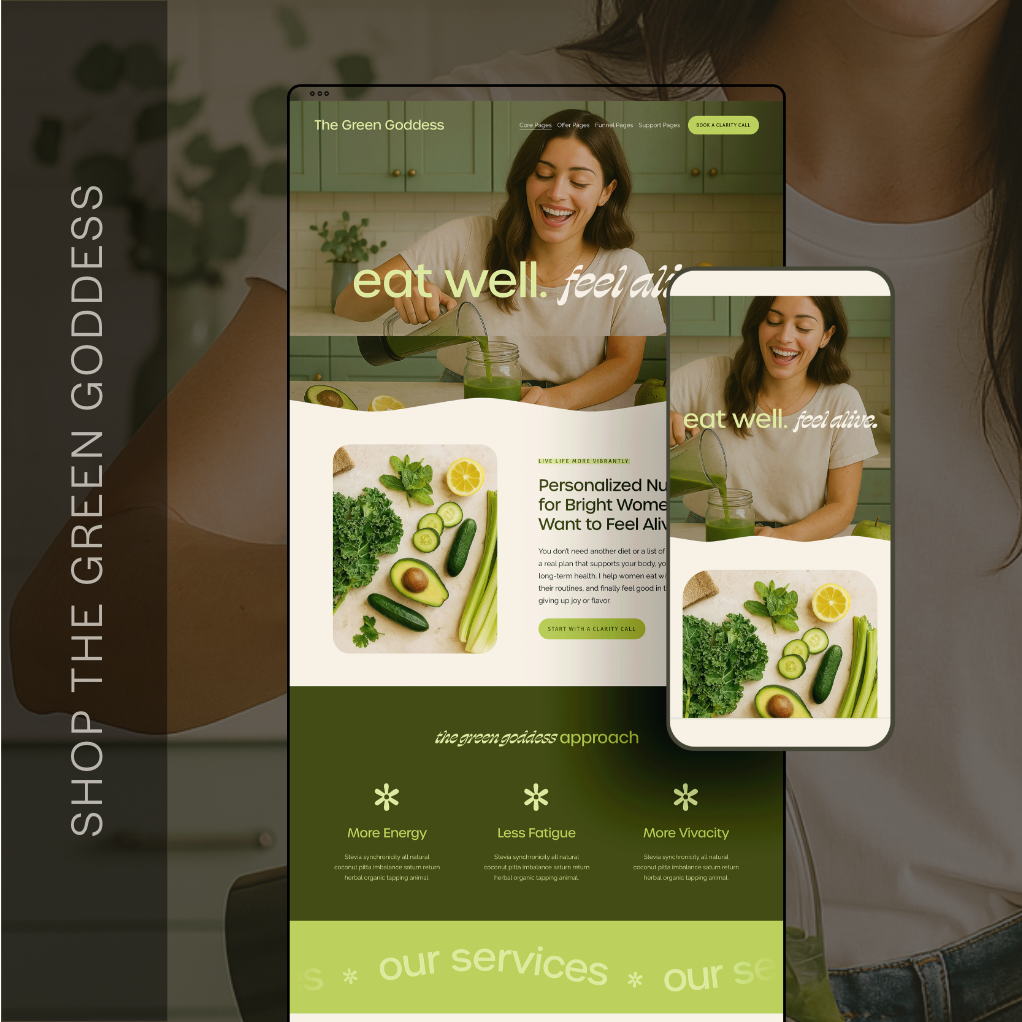Website Copywriting 101: How to DIY Website Copy that Converts
In your online business, your website copy plays a crucial role as the voice of your brand and your website salesperson.
It has the amazing ability to captivate, connect, and convert visitors into loyal customers. As someone with expertise in web design and organic marketing, I have personally witnessed the incredible transformation that effective website copy can bring to women-owned small businesses.
Now, picture this: a beautifully designed website, showcasing your products or services in their best light, but the copy falls flat, failing to engage your audience. It's like hosting a grand opening for a brick-and-mortar store, but the door is locked – no one can step inside. Your website copy is the open door, inviting your visitors to explore, connect, and ultimately choose your offerings.
The power of well-crafted website copy isn't confined to words on a screen; it's the bridge between your business and your audience. In this blog post, we'll delve into the strategies of how to DIY website copywriting, ensuring it resonates with your target audience and leads to conversion success. Whether you're a business owner or a content creator, you'll discover valuable insights that can elevate your online presence and make your brand's voice heard above the digital noise.
In this post we’ll cover:
Why copywriting is important
9 Best practices for writing DIY engaging and conversion driven copy
6 Common website copy mistakes to avoid
After reading, you’ll feel totally clear about what to look for (and avoid!) when it comes to DIYing great copy for your website.
Don’t forget to save this post to Pinterest!
Website Copywriting 101
Why is Website Copy Important?
Your website copy is like your online salesperson. It represents your brand's voice, shares your brand story, and sells your offers. Good website copy can tell a compelling story, guiding your visitors through their journey on your site, building trust, and ultimately leading to conversions.
Here’s why having strong copy on your website is a MUST:
First Impressions
Your website is often the first interaction a potential customer has with your brand. Just like a kind and helpful sales person can leave a lasting impression in a physical store, an engaging website can have a positive impact on your visitors.
Search Engine Optimization (SEO): Well-written copy that includes relevant keywords that your dream clients are using to search for your services can improve your website's visibility on search engines. When people search for products or services related to your business, effective SEO can bring more organic traffic to your site.
Conversion Rate Optimization: Effective copy can guide visitors through your website, increasing conversion rates. Whether your goal is to encourage sign-ups, purchases, or any other desired action, your website text plays a key role.
Brand Consistency: Your website copy should reflect your brand's identity, helping you maintain consistency across all your marketing efforts. A consistent brand voice helps build trust and recognition.
Best Practices for Writing Engaging & Conversion-Driven Website Copy
Writing effective website copy is both an art and a science. To create website copy that converts, you need to follow these best practices:
1. Know Your Audience
Before you even begin writing, you need to understand your target audience. Who are they? What are their needs, pain points, and desires? The better you understand your audience, the more effectively you can tailor your copy to address their specific concerns.
2. Clear Value Proposition
Your website copy should clearly state the benefits of your products or services. Explain what makes you unique, and why a visitor should choose your offerings over the competition. What problems do you solve, and how do you make your customers' lives better?
3. Compelling Headlines
The headline is often the first thing visitors see, so it needs to grab their attention. Craft attention-grabbing headlines that pique curiosity and encourage visitors to keep reading. Use powerful and descriptive words that align with the essence of your brand.
4. Use Storytelling
One of the most effective ways to engage readers is through storytelling. People love narratives. Share your brand's story, including the challenges you've overcome and the solutions you provide. Engage your audience emotionally, allowing them to connect with your brand on a personal level.
5. Benefits Over Features
Instead of just listing the features of your product or service (what’s included in the offer), focus on the benefits your customers will gain. How will your product or service improve their lives, solve their problems, or fulfill their desires? Help them envision the positive impact of choosing you.
6. Strong Call to Action (CTA)
Every page on your website should have a clear and compelling Call to Action (CTA). A CTA is a prompt that tells visitors what to do next, such as signing up for a newsletter, making a purchase, or contacting you. Use action-oriented words like "get started," "try now," or "learn more."
7. Concise and Scannable
In the online world, attention spans are short, and websites are skimmed. To keep visitors engaged, break up your text with headings, bullet points, and short paragraphs. This makes your content easy to read and digest. Use white space to reduce clutter and create a more visually appealing experience.
8. Keyword Optimization
Search engine optimization (SEO) is an essential aspect of website copywriting. Incorporate relevant keywords naturally in your copy to improve your website's SEO. However, be cautious about overloading your content with keywords, as this can lead to keyword stuffing, which can harm your search rankings. Use tools like Google Keyword Planner to find suitable keywords.
9. Social Proof
People tend to trust what others say more than what a business claims about itself. Showcase customer testimonials, reviews, and case studies on your website to build trust and credibility. These real-life experiences can sway potential customers in your favor.
Common Website Copywriting Mistakes
Hey there, as a beginner, it's important to keep in mind the common mistakes that might affect the effectiveness of your website copy. Let's take a look at some pitfalls that you should avoid:
1. Overuse of Jargon
Avoid using industry-specific jargon that might alienate visitors who aren't familiar with your industry. Your copy should be accessible and understandable to a broad audience.
2. Ignoring SEO
Neglecting SEO best practices can result in low visibility on search engines, making it harder for potential customers to find your website. Use relevant keywords strategically, but don't overdo it.
3. Lack of Clarity
Unclear or vague messaging can confuse visitors and lead to high bounce rates. Make sure your message is straightforward and easy to understand. Visitors should quickly grasp what your business is about and how you can help them.
4. Inconsistent Tone and Branding
Consistency in your brand's tone and messaging is key. Ensure that your copy aligns with your brand's personality and values. Inconsistent branding can confuse visitors and undermine your credibility.
5. Neglecting Mobile Optimization
With the increasing use of smartphones, your website copy should be optimized for smaller screens. Ensure that your copy is legible and engaging on mobile devices to provide a seamless user experience.
6. Making it all about you
Your website copy should aim to address the needs of your visitors and demonstrate how your product or service can assist them. Rather than solely focusing on your business, it's important to show empathy and articulate how you can enhance their lives. Incorporate words like "you" to establish a direct connection with your visitors.
Next Steps
Copywriting is an essential component when it comes to creating an engaging and sales-driven website. In this post we've delved into the core components of website copywriting, covering key insights including:
Why copywriting is important
Best practices for writing engaging and conversion driven copy
Common website copy mistakes
You've gained a deeper understanding of the significance of website copy, the art of creating engaging, conversion-focused content, and the common pitfalls to steer clear of.
Now, it's your turn. Whether you're a seasoned writer or just starting out, remember that crafting compelling copy is a continuous learning process. You hold the ability to engage your audience, share your unique narrative, and drive conversions that will propel your business's growth.
Don’t forget to save this post to Pinterest!
Hey I'm Jamie
-web designer, brand strategist, and former certified health coach turned creative studio founder. I specialize in building strategic, elevated Squarespace websites for wellness professionals who are ready to grow their business with more clarity, confidence, and ease.
After designing over 90 websites and supporting dozens of service-based entrepreneurs, I’ve seen firsthand how intentional design and smart strategy can completely shift the way you show up, and how you sell. This blog is where I share the real stuff: design tips, marketing strategies, and behind-the-scenes insights to help you build a brand that actually works for you.
Disclaimer: My policy is to only share products and resources that have brought value to me and/or I believe will bring value to my audience. Some of the links in this post are affiliate links, and I will earn a commission if you make a purchase using them.
Related Posts
Shop the Templates
For more web design inspiration and marketing tips, follow @glocreativedesign







































